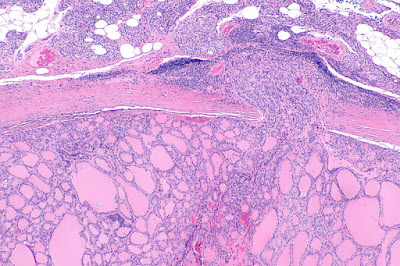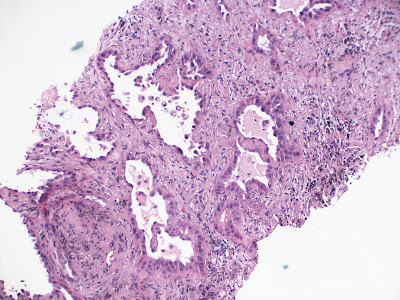Practice question III answers Pathology of thyroid
Practice question III answers Pathology of thyroid ©Jun Wang, MD, PhD 1. B. This lesion is characterized by capsulated nodular growth of packed small follicles with normal appearing follicular cells. This can be either follicular adenoma , if no invasion can be seen, or follicular carcinoma , if vascular or capsular invasion is seen. Capsular invasion is seen in this case, characterized by capsule disconnected due to follicular tissue. Hashimoto thyroiditis is characterized by follicular destruction in a background of diffuse polyclonal lymphoid infiltrate, with or without lymphoid follicle formation. Multinodular goiter is characterized by unevenly benign enlargement of thyroid with nodular growth pattern and follicles markedly various in size. Papillary thyroid carcinoma , including follicular variant, is diagnosed based on typical nuclear features, such as enlarged nuclei, washed out chromatin, nuclear grooves or inclusion. 2. B. PAX8, PTEN and RAS/PI3KCA mutation can

